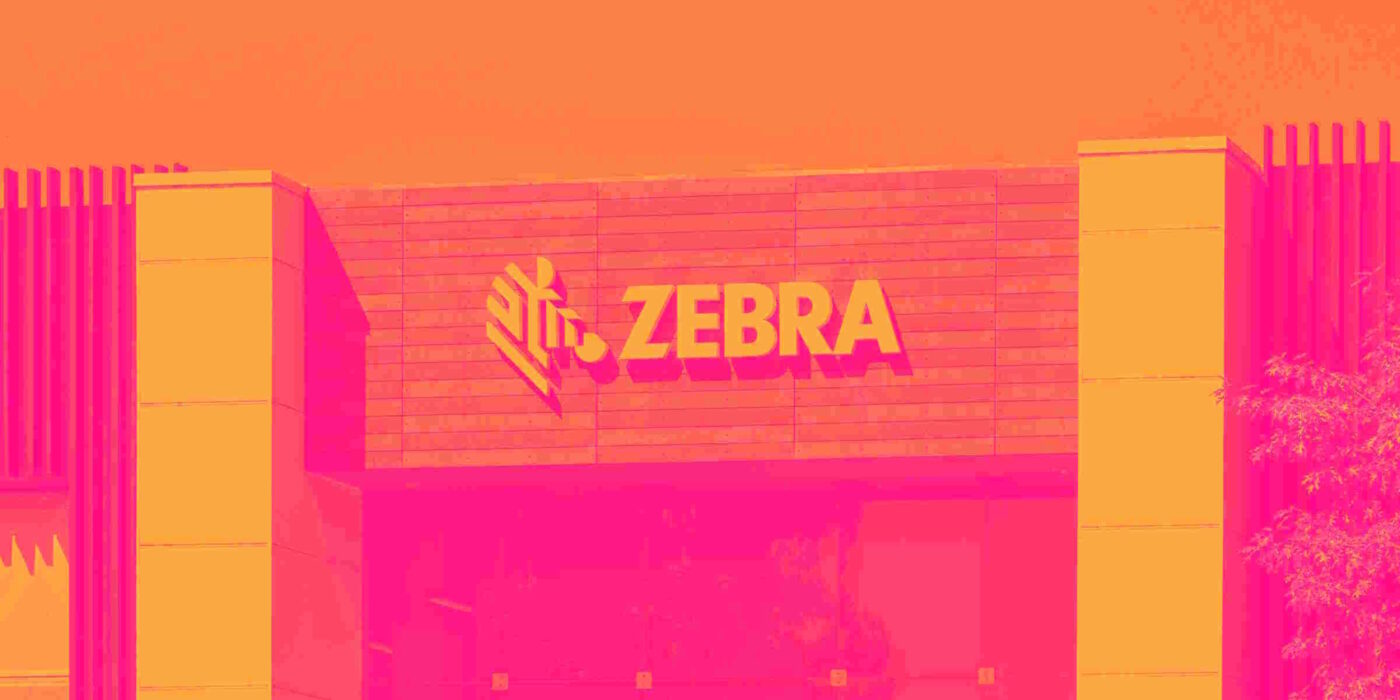|
|
|

|
|||||

|
|

Enterprise data capture company Zebra Technologies (NASDAQ:ZBRA) met Wall Street’s revenue expectations in Q3 CY2025, with sales up 5.2% year on year to $1.32 billion. The company expects next quarter’s revenue to be around $1.46 billion, coming in 2.4% above analysts’ estimates. Its non-GAAP profit of $3.88 per share was 3.4% above analysts’ consensus estimates.
Is now the time to buy ZBRA? Find out in our full research report (it’s free for active Edge members).
Zebra’s third quarter results met Wall Street’s revenue expectations but were followed by a significant negative market reaction. Management pointed to uneven demand across key regions and verticals as a central challenge, with strength in North America, Asia Pacific, and Latin America offset by continued softness in EMEA and manufacturing. CEO William Burns highlighted, “Our retail and e-commerce end market was a bright spot,” while noting that macro uncertainty and trade policies contributed to uneven demand. The company also faced declining operating margins, attributed in part to higher U.S. import tariffs, despite operational efficiencies and selective pricing actions.
Looking forward, Zebra’s guidance assumes continued cautious customer sentiment and macroeconomic headwinds, but management sees growth driven by AI-enabled products, RFID adoption, and the integration of Elo Touch Solutions. Burns stated, “We are starting this journey with our Zebra companion offerings,” referencing pilot projects for AI agents and next-generation hardware. CFO Nathan Winters added that substantial tariff mitigation and ongoing supply chain adjustments are expected to support margins into next year, while pilots for AI and software offerings are anticipated to generate their first revenues in 2026 and beyond.
Management attributed third quarter performance to regional growth, strong RFID adoption, and continued success in retail and e-commerce, while also noting the impact of tariffs and mixed results in manufacturing.
Management expects future performance to hinge on AI-driven product innovation, RFID expansion, and continued tariff mitigation, while remaining cautious about uneven demand and macroeconomic uncertainty.
In the coming quarters, our analysts will be monitoring (1) the pace of AI solution adoption and pilot-to-revenue conversion in frontline applications, (2) successful integration and cross-selling of Elo Touch Solutions’ products into Zebra’s existing customer base, and (3) progress on tariff mitigation and supply chain resilience. The trajectory of RFID growth and recovery in EMEA and manufacturing verticals will also be key indicators of sustained momentum.
Zebra currently trades at $274.48, down from $310.18 just before the earnings. In the wake of this quarter, is it a buy or sell? Find out in our full research report (it’s free for active Edge members).
Donald Trump’s April 2025 "Liberation Day" tariffs sent markets into a tailspin, but stocks have since rebounded strongly, proving that knee-jerk reactions often create the best buying opportunities.
The smart money is already positioning for the next leg up. Don’t miss out on the recovery - check out our Top 6 Stocks for this week. This is a curated list of our High Quality stocks that have generated a market-beating return of 183% over the last five years (as of March 31st 2025).
Stocks that made our list in 2020 include now familiar names such as Nvidia (+1,545% between March 2020 and March 2025) as well as under-the-radar businesses like the once-micro-cap company Tecnoglass (+1,754% five-year return). Find your next big winner with StockStory today.
StockStory is growing and hiring equity analyst and marketing roles. Are you a 0 to 1 builder passionate about the markets and AI? See the open roles here.
| Dec-10 | |
| Dec-04 | |
| Dec-01 | |
| Nov-27 | |
| Nov-24 | |
| Nov-21 | |
| Nov-14 | |
| Nov-13 | |
| Nov-11 | |
| Nov-04 | |
| Nov-03 | |
| Oct-31 | |
| Oct-31 | |
| Oct-29 | |
| Oct-28 |
Join thousands of traders who make more informed decisions with our premium features. Real-time quotes, advanced visualizations, backtesting, and much more.
Learn more about FINVIZ*Elite